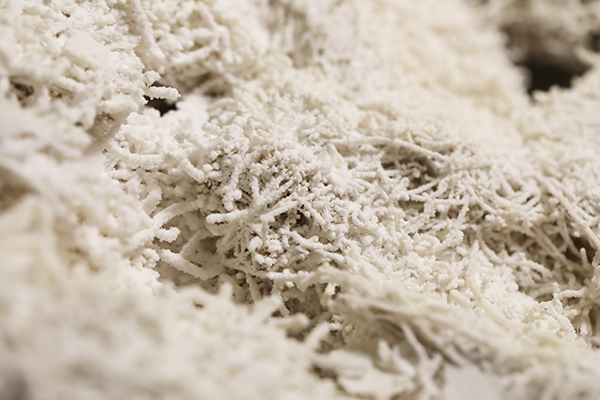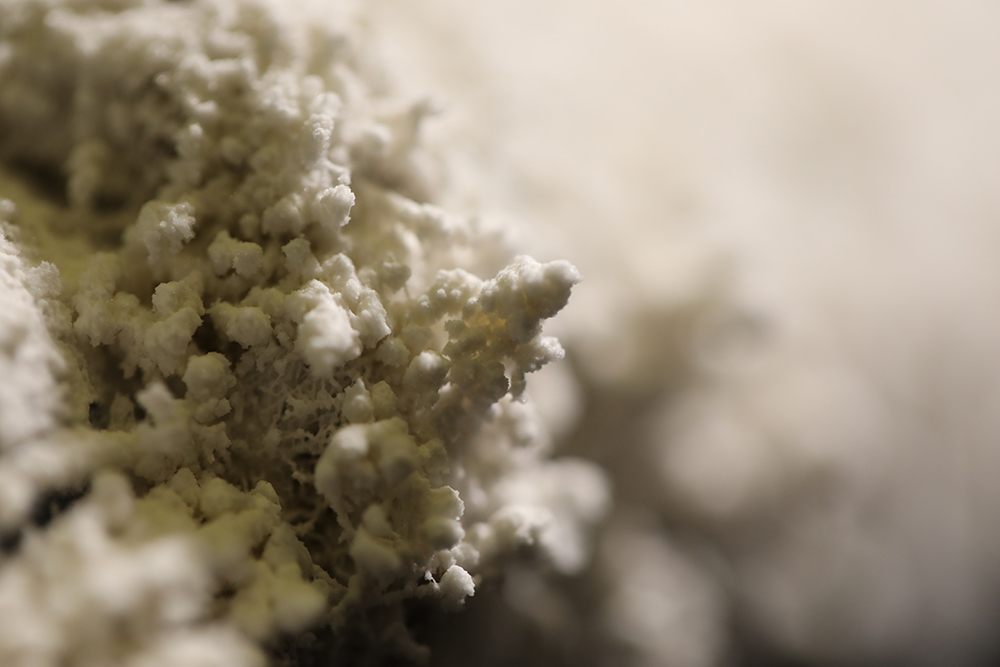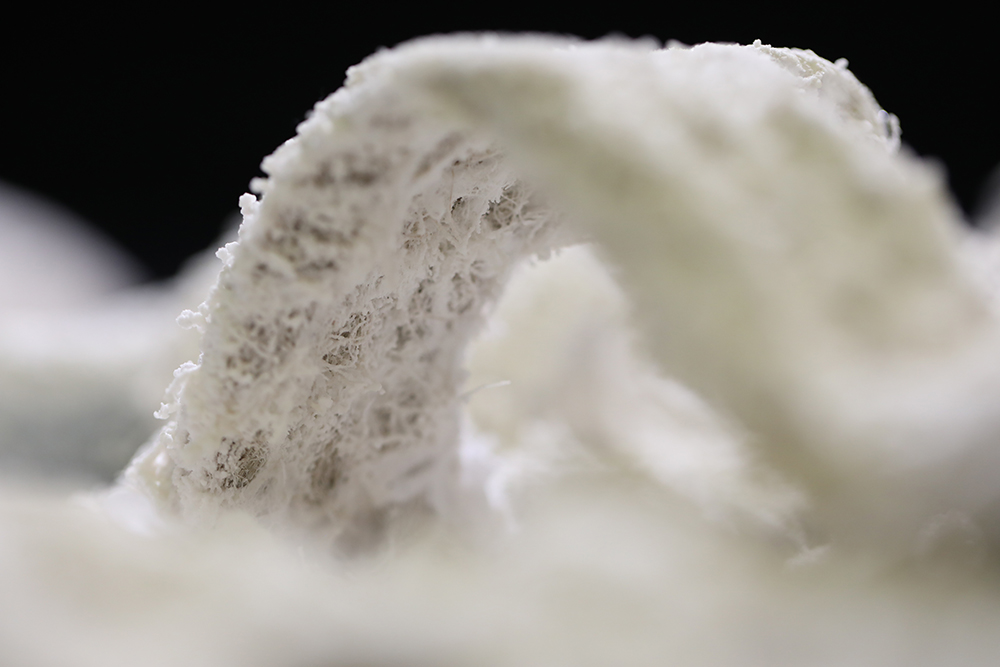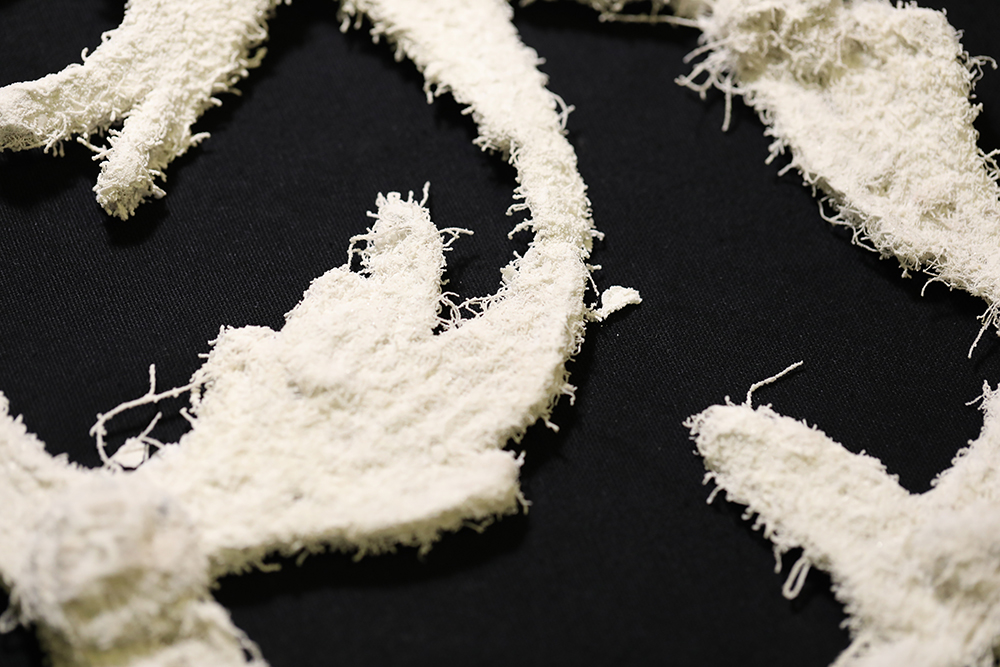Biocalcifiedtextile architecture

Biocalcified textile architecture
a 2-week project in collaboration with Bastian Beyer and Daniel Suarez from the Matters of Activity cluster, Humboldt University, Berlin, developed in the framework of the 2022 « matérialités futures » course, 4DTM, Ecole des Arts Déco.
Biocalcified textile architecture is a practice-based and design-led research course sitting at the intersection of textile design, architecture and microbiology. It asks how textile designers can work with calcifying bacteria to design bio-based solidified textiles for architectural expressions. Calcifying bacteria are micro-organisms known for their ability to precipitate calcite and solidify sand given a calcium source and urea through the process of microbiologically-induced calcite precipitation or biological cementation. Also known as biocalcification, this process is used by engineers in the consolidation and repair of sand, brick and concrete structures while rare incursions in the design community relate essentially to sand or concrete-based architectural and urban design demonstrators. Here building on the pioneering Column project by Bastian Beyer and Daniel Suarez, we expand the vocabulary of what a textile-based biocalcified architecture can be with textile design crafts and sensitivity.





A series of jute-based samples have been shaped according to various textile techniques including weaving, crocheting, stitching before being exposed to the biocalcification process. This treatment was developed over 3 days, consisting first into the soaking of the textiles with calcite-secreting bacteria and secondly another bath with the complementary compound to induce the calcification. Through this process, the samples are not only hardened but also acquire a white finishing recalling stalagmite textures. From these hands-on experimentation a series of design proposals were developed, suggesting a variety of design-led applications and perspectives such as: bioreceptive domestic structures, urban furniture, crocheted vernacular architectures, stitched architectural ornaments and modular mashrabiya.
Students: Juliette Clapson, Mélanie Dhubert Riollet, Nina Dos Santos, Jeanne Guillet, Maude Guirault, Violette Husson, Victor Manceau, Arnaud Mazel, Chloé Ménard, Oscar Nahan.
Coordination & facilitation: Aurélie Mosse
Teaching team: Bastian Beyer, Daniel Suarez, Aurélie Mosse
Scientific partners Annette Esnault-Filet, Leslie Sapin from Soletanche-Bachy
Funding The course benefited of the respective support of I-Portunus Houses pilot scheme*, Soletanche Bachy, Ecole des Arts Décoratifs and the Matters of Activity cluster, Humboldt University (10k€).
Related publications
- Mosse, A., Zamora, D.S., Beyer, B., 2024, ‘Towards a Bacterially-Induced Textile Architecture’, In: Thomsen, M.R., Ratti, C., Tamke, M. (eds) Design for Rethinking Resources. UIA 2023. Sustainable Development Goals Series, pp.47-63, Springer, Cham.
- Granja, C., 2023, Design textile: des bactéries sans un pli, Libération, Nous! Le vivant: éclairage, 22 septembre 2023.
- MoA, 2022, Materials of the future, April 2022.
- I-Portunus, 2022, Ecole des Arts Décoratifs, stories.
* I-Portunus Houses pilot scheme is implemented, on behalf of the European Commission, by a consortium of organisations that have been pioneers of European cultural mobility programmes themselves. Coordinated by the European Cultural Foundation (Amsterdam), the i-Portunus Houses consortium involves MitOst (Berlin) as main mobility implementer and the Kultura Nova Foundation (Zagreb) as lead in evaluation and analysis.